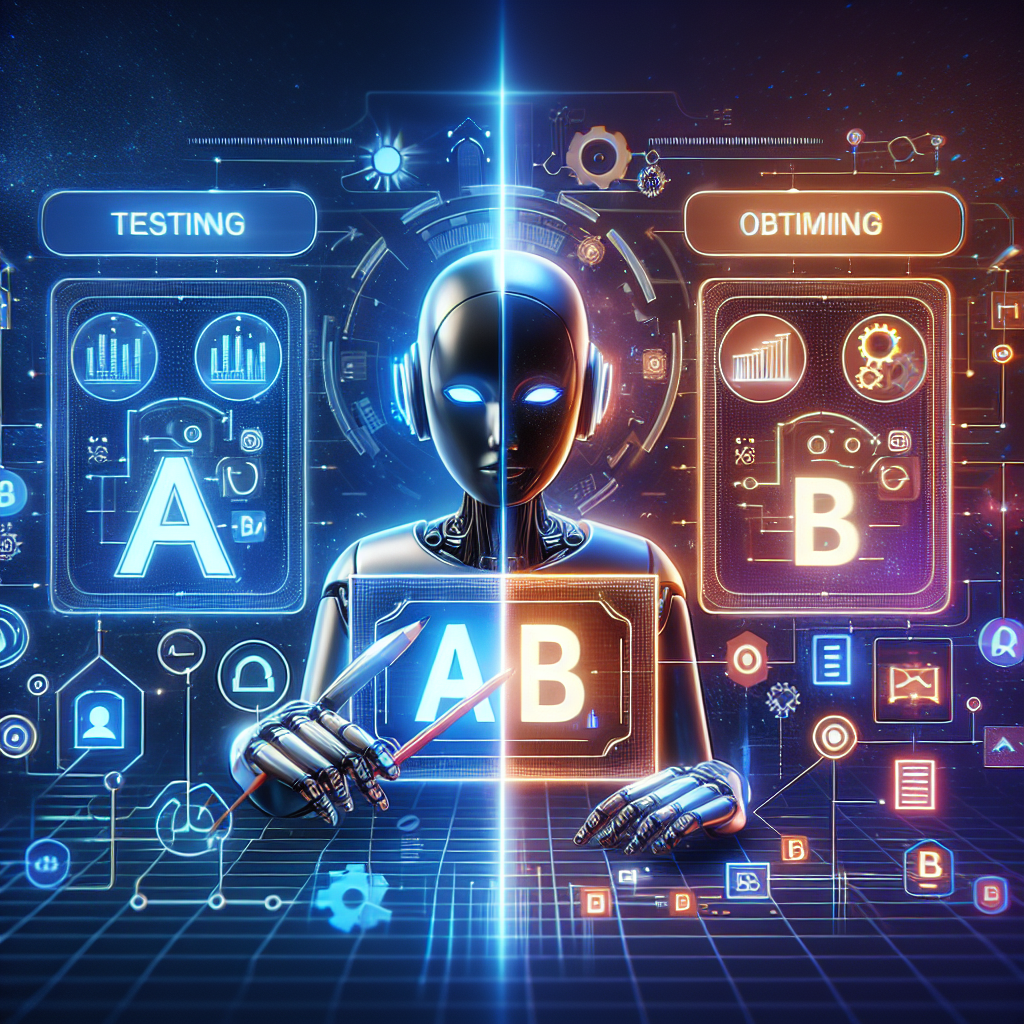AI-Powered A/B Testing for Marketing Optimization
A/B testing, also known as split testing, is a method of comparing two versions of a webpage, email, or other marketing asset to determine which one performs better. By randomly showing different versions to different segments of your audience, you can identify which version leads to higher conversions, such as sign-ups, purchases, or click-through rates.
Traditionally, A/B testing has been a manual and time-consuming process, requiring marketers to create multiple versions of assets, set up experiments, monitor results, and make decisions based on statistical significance. However, with the rise of artificial intelligence (AI) technology, A/B testing has become more efficient and effective than ever before.
AI-powered A/B testing uses machine learning algorithms to automatically optimize marketing assets based on user behavior and preferences. By analyzing large amounts of data in real-time, AI can quickly identify patterns and make recommendations on which versions are most likely to drive conversions.
Benefits of AI-Powered A/B Testing
1. Faster Results: AI can process data at a much faster rate than humans, allowing for quicker insights and decisions on which version of an asset performs better.
2. Data-Driven Decisions: AI analyzes data objectively and without bias, helping marketers make informed decisions based on statistical significance rather than gut feelings.
3. Personalization: AI can tailor marketing assets to individual preferences and behavior, leading to higher engagement and conversions.
4. Continuous Optimization: AI can run multiple tests simultaneously and make real-time adjustments to optimize performance continually.
5. Cost-Effective: AI-powered A/B testing reduces the need for manual labor and resources, saving time and money for marketers.
How AI-Powered A/B Testing Works
1. Data Collection: AI collects data on user behavior, such as clicks, conversions, and engagement metrics, to understand how different versions of an asset perform.
2. Hypothesis Generation: AI generates hypotheses on which elements of the asset (such as copy, design, or call-to-action) are likely to impact performance based on historical data.
3. Experimentation: AI randomly assigns different versions of the asset to segments of the audience and measures performance against predefined metrics.
4. Analysis: AI analyzes the results of the experiment and identifies the winning version based on statistical significance.
5. Optimization: AI makes recommendations on how to improve the winning version further, such as adjusting copy, images, or layout.
Frequently Asked Questions
1. How accurate is AI-powered A/B testing compared to traditional methods?
AI-powered A/B testing is generally more accurate than traditional methods because it can process large amounts of data quickly and make decisions based on statistical significance. However, like any technology, AI is not infallible and may still require human oversight to ensure the validity of results.
2. Can AI-powered A/B testing work for all types of marketing assets?
AI-powered A/B testing can work for a wide range of marketing assets, including websites, emails, ads, and social media posts. However, the effectiveness of AI may vary depending on the complexity of the asset and the quality of data available.
3. How can I get started with AI-powered A/B testing?
To get started with AI-powered A/B testing, you will need to choose a platform or tool that offers AI capabilities for optimization. Many marketing automation platforms now include AI-powered A/B testing as a feature, so look for one that fits your needs and budget.
4. How long does it take to see results with AI-powered A/B testing?
The timeline for seeing results with AI-powered A/B testing can vary depending on the complexity of the asset, the size of the audience, and the goals of the experiment. In general, you can expect to see initial results within a few days to a week, with ongoing optimization over time.
5. What are some best practices for AI-powered A/B testing?
Some best practices for AI-powered A/B testing include:
– Define clear goals and metrics for the experiment
– Test one variable at a time to isolate the impact of each change
– Use a large enough sample size to ensure statistical significance
– Monitor results regularly and make adjustments as needed
– Document learnings and apply them to future experiments
In conclusion, AI-powered A/B testing is a powerful tool for optimizing marketing assets and driving conversions. By leveraging machine learning algorithms to analyze data and make recommendations, marketers can make more informed decisions and achieve better results than ever before. Whether you are a small business or a large enterprise, AI-powered A/B testing can help you stay ahead of the competition and maximize the impact of your marketing efforts.

